Getting a prosthetic that fits well is more than just matching it to the body’s shape. A truly perfect fit means comfort, stability, and confidence in every step. That doesn’t happen by chance—it’s the result of careful work, constant testing, and smart use of tools. One of the most powerful tools we now have in prosthetic care is pressure mapping.
Pressure mapping lets us see what the body feels. It shows how weight spreads inside the socket, where too much pressure builds up, and where support might be missing. It brings hidden problems to light, helping prosthetists make the right changes at the right time. For users, this means less pain, fewer adjustments, and more comfort from the start.
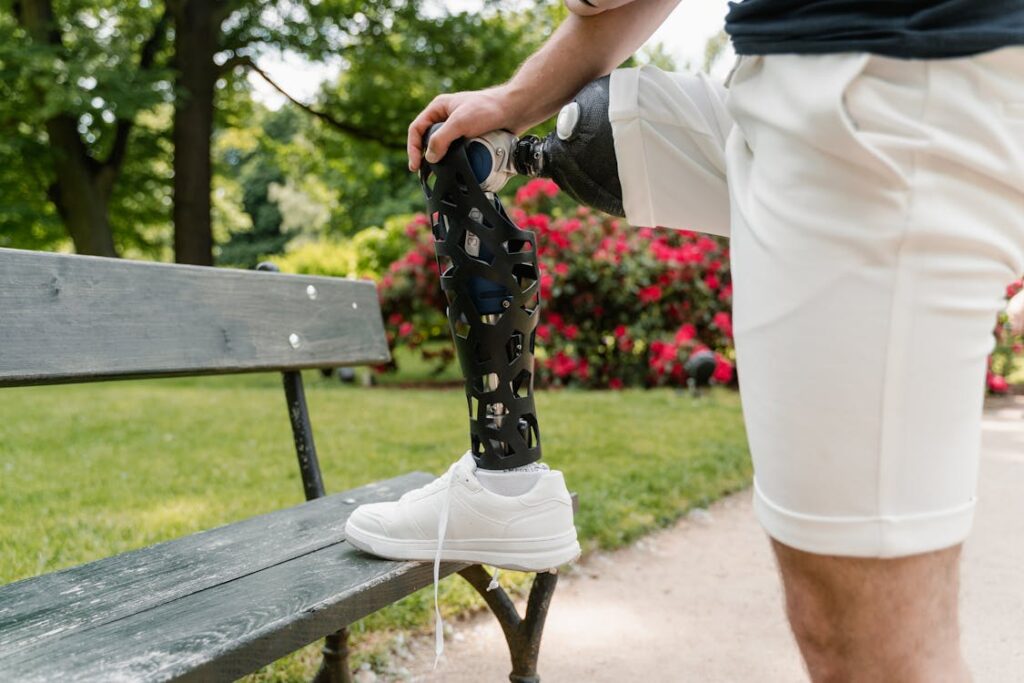
Understanding Pressure Mapping in Prosthetics
What Is Pressure Mapping?
Pressure mapping is a technology that shows us how pressure is spread out across a surface. In prosthetics, that surface is usually the inside of the socket where the limb fits. Special sensors pick up how much force is being applied at different spots.
The data then gets turned into a visual map, often in the form of colors. High-pressure areas show up in red, while low-pressure spots appear in blue or green.
What makes this tool so helpful is that it shows the things we can’t see with our eyes. A socket might look like it fits well, but still create discomfort because the pressure is not balanced inside.
With pressure mapping, we get a clear picture of what the limb is experiencing. It gives us hard facts we can use to improve the fit right away.
This kind of data helps not just during the first fitting, but throughout the lifetime of using a prosthetic. The body changes over time. Muscles grow or shrink. Skin becomes more or less sensitive.
Even a small shift in weight or posture can affect how the socket feels. Pressure mapping lets us catch those changes early and make sure the prosthetic is still doing its job well.
Why Pressure Matters So Much
The inside of a prosthetic socket is a busy place. It carries body weight, absorbs shock, and holds the limb in place during every movement. If the pressure inside the socket is too high in one area, it can lead to pain, skin damage, or even open wounds.
If it’s too low in another area, the limb might feel loose or unsupported. That kind of uneven pressure doesn’t just cause discomfort—it can lead to long-term injury.
Even small areas of high pressure can create big problems. The skin and tissues in the residual limb are sensitive. Repeated pressure on the same spot can reduce blood flow, cause swelling, and break down skin. Many users try to ignore these problems at first.
They may adjust their walking style or take breaks more often. But that doesn’t fix the root cause. Over time, it can lead to infection or force the person to stop using the prosthetic altogether.
With pressure mapping, we catch those warning signs early. Instead of guessing where the problem is, we see it clearly. That allows us to adjust the socket, change the alignment, or add support exactly where it’s needed. It’s faster, more accurate, and much safer than working by trial and error.
How Pressure Mapping Works in Practice
The process of pressure mapping starts by placing thin, flexible sensors inside the prosthetic socket. These sensors are almost like a second skin—they don’t change how the socket fits, and the user usually doesn’t feel them.
Once the limb is placed inside the socket and the user starts to walk or stand, the sensors record the pressure being applied at different points.
The data is then sent to a computer, which turns it into a pressure map. These maps are often color-coded and easy to understand. Red spots show areas where the pressure is too high.
Blue or green areas might show low contact zones. The prosthetist uses this map like a guide, helping to pinpoint exactly where changes are needed.
Once the pressure map is reviewed, adjustments can be made. That could mean reshaping part of the socket, adding padding, or changing how the limb sits inside.
After each change, the pressure is tested again. This loop continues until the pressure is evenly spread and the user feels comfortable.
At Robobionics, we treat this process as a conversation. We don’t just rely on the map—we also listen closely to what the user says. Technology gives us data, but real success comes from combining that data with the person’s own experience. That’s how we reach the perfect fit.
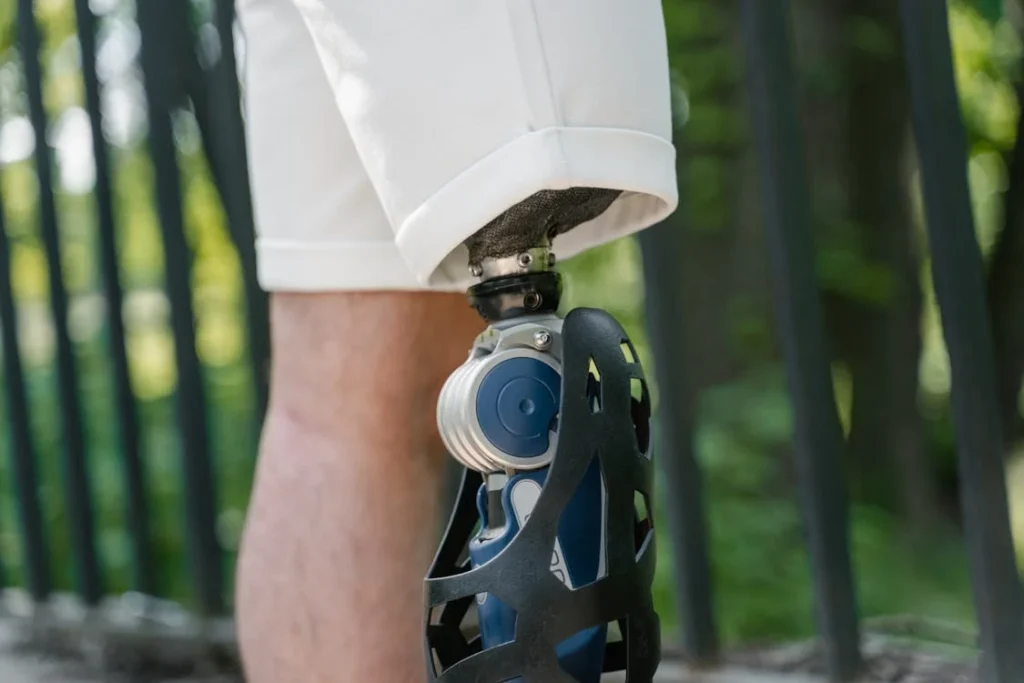
The Benefits of Pressure Mapping for Users
A Safer Fit From Day One
One of the biggest advantages of using pressure mapping is that it helps get the fit right from the very beginning. When someone receives a prosthetic for the first time, their body is still adjusting.
The residual limb may be healing, changing shape, or reacting to pressure in new ways. During this phase, even small issues can turn into serious problems if not addressed early.
Without pressure mapping, the process of socket fitting often depends on how the limb looks and how the person says it feels. While this information is helpful, it can also be incomplete. Many users are not sure how a socket is supposed to feel, especially during the early stages.
Some may ignore discomfort or find it hard to explain where the pain is coming from. Others might feel pressure in one area but not realize that it’s affecting other parts of the body too.
Pressure mapping fills in these gaps. It gives us a detailed look at the hidden forces inside the socket. This allows prosthetists to make smarter decisions, adjust the socket more precisely, and avoid complications.
When pressure is balanced from the start, users have a smoother experience, less pain, and fewer reasons to come back for repairs or refits.
This isn’t just a short-term benefit. A good first fit sets the stage for long-term success. It builds trust between the user and the prosthetic. It creates confidence in movement. And it encourages users to be active from day one—walking, working, and living more fully.
Reducing the Need for Guesswork and Repeated Visits
One of the challenges in prosthetic care is dealing with discomfort that doesn’t have a clear cause. Sometimes a user might come in with complaints like, “It just doesn’t feel right,” or “There’s some pain, but I can’t tell where.” These vague issues are common, but without the right tools, they can be hard to fix.
Pressure mapping takes away much of the guesswork. It shows the exact spots where pressure is building up or falling short. It also shows how these patterns change as the user moves—whether walking, climbing stairs, or standing still.
This makes it easier to identify problems, even when the user has trouble describing them.
As a result, fewer adjustments are needed. The prosthetist doesn’t have to rely on trial and error. And users don’t have to return multiple times just to get a comfortable fit. Each visit becomes more focused, more effective, and more satisfying.
Over time, this approach saves effort, time, and emotional stress. It builds a smoother relationship between the user and the prosthetic team. People begin to feel more involved in their own care. They understand how their prosthetic works and what they can do to keep it fitting well.
Helping Prevent Skin and Soft Tissue Injuries
Skin health is one of the biggest concerns for people using prosthetics. The residual limb has to deal with pressure, sweat, movement, and friction—all inside a tight space.
Without careful monitoring, these factors can lead to pressure sores, blisters, swelling, and even open wounds.
These injuries aren’t just painful. They can stop someone from using their prosthetic for days or even weeks. They may require medical treatment or cause infections. In some cases, users become so frustrated or anxious that they stop using their prosthetic altogether.
Pressure mapping helps stop this from happening. By showing the spots that carry too much pressure or heat, it allows the prosthetist to adjust the socket before any real damage occurs.
Think of it like a safety check for your skin. It keeps the limb healthier and protects against injuries that can interrupt daily life.
The earlier pressure problems are found, the easier they are to fix. This is especially important for people with sensitive skin, circulation problems, or underlying medical issues.
With pressure mapping, we can be proactive rather than reactive—stopping small problems before they grow.
Improving the User’s Overall Comfort and Confidence
In the end, comfort isn’t just about avoiding pain. It’s about feeling secure, supported, and at ease in your body. When a prosthetic fits well, it becomes part of you. You walk without thinking. You sit without shifting. You move with more confidence.
Pressure mapping helps create that comfort. It removes the pressure points that make walking difficult. It stops the tiny irritations that add up over the day. It gives users a prosthetic that works with their body instead of fighting against it.
This kind of comfort leads to confidence. People feel more willing to take longer walks, explore new places, or return to work. They trust their prosthetic, and that trust opens the door to a fuller, more independent life.

How Pressure Mapping Fits Into the Prosthetic Fitting Process
When and How It’s Used
Pressure mapping is typically used during several key moments in a prosthetic user’s journey. One of the most important is during the initial socket fitting. At this stage, the limb is still adapting, and many issues can be caught early.
Once the socket is shaped and worn for the first time, sensors are placed inside it, and pressure is measured while the user walks, stands, or performs light activities. This gives a baseline reading of how well the socket fits.
From here, the prosthetist studies the pressure data and looks for imbalances. Maybe there’s too much pressure at the bottom of the socket, or maybe the sides are not offering enough support.
The prosthetist will then reshape or re-pad the socket, or adjust the alignment. After the changes, the pressure is measured again to check improvement.
Pressure mapping can also be used during follow-up visits. Sometimes, a socket that was once comfortable starts to feel off after a few weeks or months. This can be due to natural changes in the residual limb, increased activity, or even small posture shifts.
These subtle changes might not be visible from the outside—but pressure mapping can reveal them instantly.
For more active users—such as athletes or those with physically demanding jobs—pressure mapping becomes especially useful. These individuals often place more strain on their prosthetics and require a fit that supports higher levels of movement and impact.
With the help of pressure data, a prosthetist can fine-tune the fit for maximum performance and protection.
Customization Made Easier
No two people are the same, and no two residual limbs are identical. Even two users with the same level of amputation may need very different socket designs.
That’s why prosthetics should never be one-size-fits-all. Pressure mapping helps make sure the fit is personalized, right down to the smallest detail.
By showing exactly where the body needs more or less support, it allows each prosthetic to be tailored like a custom suit. The pressure map reveals the hidden story of each user’s limb—its shape, sensitivity, and pressure tolerance.
That story becomes the foundation for a better, more personal design.
Over time, this leads to sockets that not only fit better but also last longer. When pressure is well-balanced, there’s less rubbing, less strain, and less chance that the socket will need to be replaced quickly. Users can go about their lives with fewer interruptions and less discomfort.
Customization also builds trust. When users see how their feedback and movement data shape the outcome, they feel heard and included.
They begin to view their prosthetic not just as a device, but as something made for them—something that supports their goals, comfort, and lifestyle.
Pressure Mapping Beyond Lower-Limb Prosthetics
While pressure mapping is often discussed in the context of leg prosthetics, it is also extremely useful for upper-limb devices. The inside of an arm socket deals with a different kind of pressure, but the risks are similar. Too much force in one spot can lead to bruising, soreness, or even nerve damage.
For upper-limb users, pressure mapping helps balance control and comfort. If the socket is too tight, it might restrict blood flow or limit movement.
If it’s too loose, the prosthetic may slip or feel unsteady. Pressure mapping helps find the sweet spot where support and freedom of movement come together.
This is especially useful for people who rely on their upper-limb prosthetic for tasks like lifting, typing, or carrying. These activities involve subtle, repetitive motions that can lead to wear on the limb if the socket isn’t fitting just right.
Pressure data ensures that those movements stay smooth and safe.
At Robobionics, we’ve found that even small adjustments in upper-limb sockets—based on pressure mapping—can lead to a big boost in daily function.
Users report better grip control, more comfort, and less strain in their shoulder and back. It’s a reminder that precision matters everywhere, not just in the lower body.
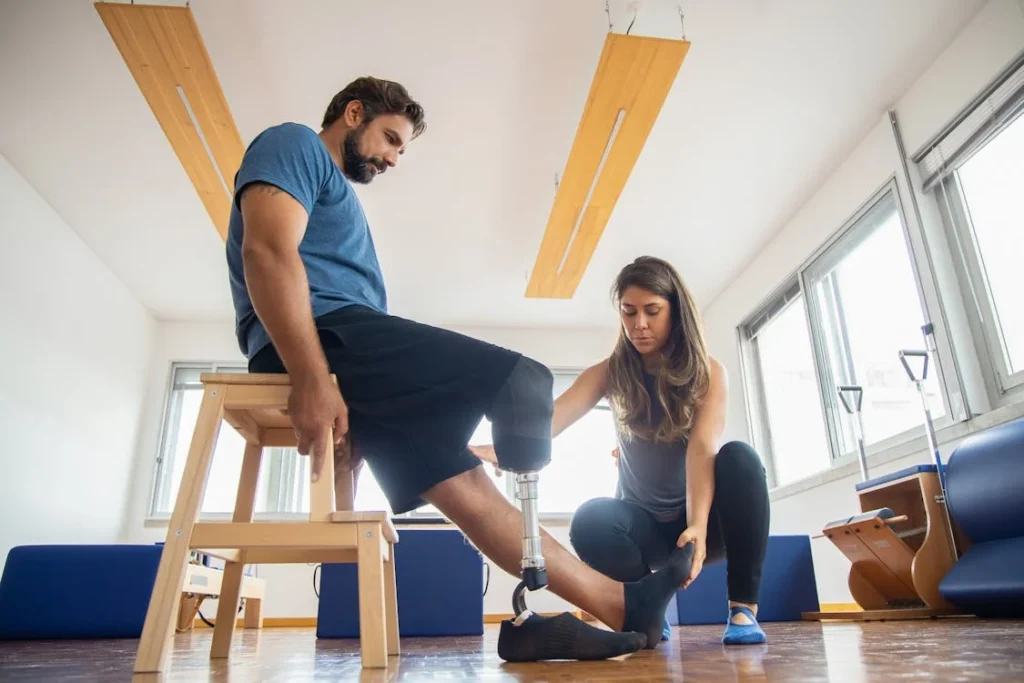
The Future of Pressure Mapping in Prosthetic Care
Smarter Systems, Better Outcomes
Technology is constantly evolving, and pressure mapping is no exception. What used to be a complex and time-consuming process is now becoming faster, easier, and more user-friendly. Today’s pressure sensors are thinner, more flexible, and more sensitive than ever.
They can gather data with greater accuracy without making the prosthetic feel bulky or different. This means more detailed information, collected in real-time, without interfering with how the user moves.
In the near future, pressure mapping may become a part of everyday prosthetic care—not just something used during special appointments.
Some systems are already being developed that can track pressure over hours or days, giving a complete picture of how the prosthetic performs throughout real life, not just in a clinic.
This kind of continuous monitoring will help identify pressure issues early, even before the user notices them.
Artificial intelligence is also playing a growing role. As more data is collected, smart software can start recognizing patterns and predicting problems.
Imagine a prosthetic system that tells you when it’s time for a socket adjustment, based on tiny changes in how pressure is distributed. These kinds of innovations are no longer a dream—they’re quickly becoming reality.
At Robobionics, we are always keeping an eye on these developments. Our goal is to bring the best technology to the people who need it most—and make sure it stays accessible, affordable, and easy to use.
Making Pressure Mapping More Accessible in India
While advanced tools like pressure mapping are well known in some parts of the world, they are still new or unfamiliar in others. In India, many prosthetic users still rely on traditional fitting methods.
These can be effective, but they leave a lot of room for error—especially in rural areas where access to trained specialists may be limited.
That’s why we believe strongly in spreading awareness about pressure mapping and its benefits. When users and caregivers understand what this technology can do, they’re more likely to ask for it, use it, and benefit from it.
At the same time, we are working to make pressure mapping a standard part of our care approach—not just in cities, but in towns and smaller clinics across India.
We also partner with clinics like Omnify Prosthetics to ensure that pressure mapping isn’t limited to a few select users. Everyone deserves a well-fitting prosthetic, no matter where they live or what their background may be.
With the right training, right tools, and the right care model, pressure mapping can help raise the overall standard of prosthetic care across the country.
The goal is simple: fewer adjustments, less pain, more comfort, and a better quality of life for every prosthetic user.
Empowering Users With Knowledge
A big part of achieving a perfect fit is helping users understand how their prosthetic works—and how pressure affects their comfort and safety.
When people know what pressure mapping is, they’re better equipped to speak up, ask questions, and seek help when needed. They become more active in their own care, which leads to better results.
We always encourage users to keep track of their comfort levels, daily routines, and any changes they notice. If something starts to feel wrong—like a new pressure point, swelling, or discomfort—it’s important to speak up. The earlier an issue is addressed, the easier it is to fix.
By combining user feedback with pressure mapping data, we get the clearest picture of what’s working and what’s not. That’s where the real value of this technology shines.
It’s not about fancy graphs or numbers. It’s about making sure people can live, move, and thrive with confidence in every step.
At Robobionics, we see every prosthetic fitting as a partnership between technology, expertise, and human experience. Pressure mapping is one of the tools that helps bring all of that together in a way that’s meaningful and lasting.
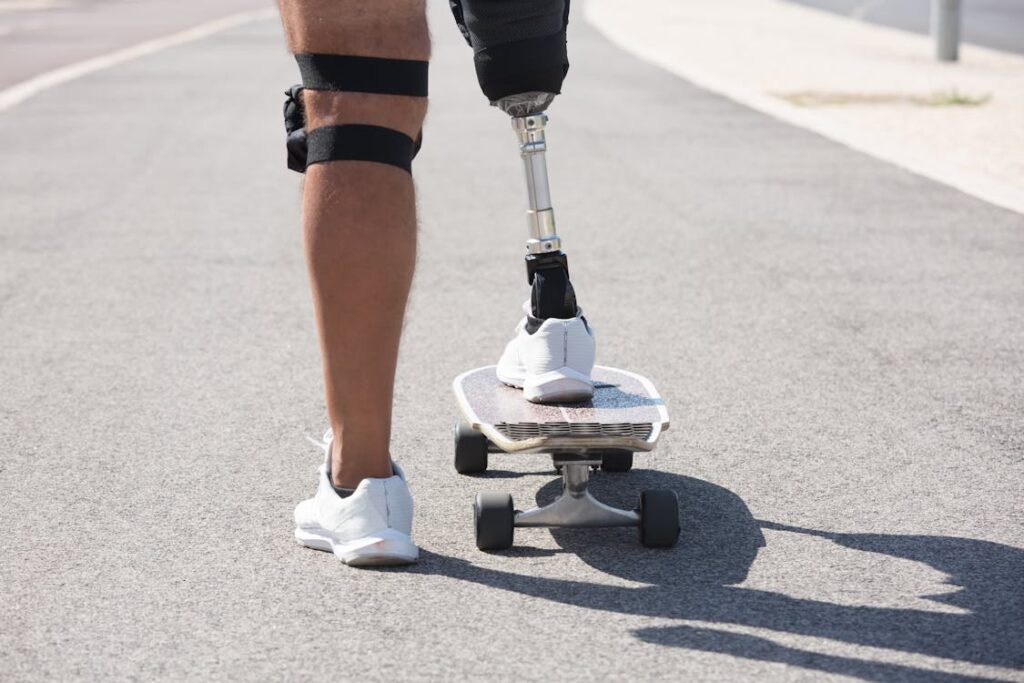
How Pressure Mapping Improves Prosthetic Socket Design Innovation
Data-Driven Design for Better Fit
One of the most exciting impacts of pressure mapping lies in how it’s influencing the future of prosthetic socket design. Traditionally, sockets were shaped based on measurements, visual inspection, and the experience of the prosthetist.
While this still plays a critical role, the addition of real-time pressure data is changing how sockets are imagined, built, and improved.
When a prosthetist receives pressure mapping feedback, it doesn’t just inform the immediate fit—it feeds back into the design process itself.
The data shows exactly where existing designs fall short, how weight shifts during movement, and how pressure behaves under different loads or positions. That kind of insight helps create better socket shapes from the very beginning.
Instead of shaping a socket purely based on static models, designers can now account for dynamic pressure behavior. They know how the limb behaves while walking, sitting, climbing stairs, or bending.
This allows them to modify curves, edges, and pressure zones in the socket in a way that supports actual movement rather than just static posture.
This shift toward data-driven design means that every new socket generation can be more refined, more responsive, and more user-friendly than the last. Pressure mapping doesn’t just solve today’s fitting problems—it helps prevent tomorrow’s.
3D Printing Meets Pressure Precision
Pressure mapping is also playing a big role in the rise of custom 3D-printed prosthetic sockets. At Robobionics, we’ve embraced this technology because it offers both speed and flexibility.
When you combine it with pressure mapping, the result is a custom-fit socket that truly reflects the user’s needs.
Here’s how it works: pressure mapping data shows the exact pressure points inside the socket. That data can be turned into a digital model, where adjustments are made to the socket shape in software.
Once optimized, the socket can be printed with exact curves, reinforcements, or relief areas that reflect what the body actually needs.
This process saves time and reduces waste, but more importantly, it boosts precision. Instead of shaping and reshaping by hand, the prosthetist can dial in tiny changes digitally. The result is a more accurate fit right from the first print.
As more clinics adopt 3D printing technology, pressure mapping will become an even more essential part of the process. It gives the data that drives the design, ensures the socket is customized to the user’s body, and allows repeatable accuracy in production.
By combining pressure mapping and 3D printing, we’re stepping into a future where prosthetic design is not just skilled—it’s smart. And smart design means better comfort, better mobility, and better quality of life for every user.
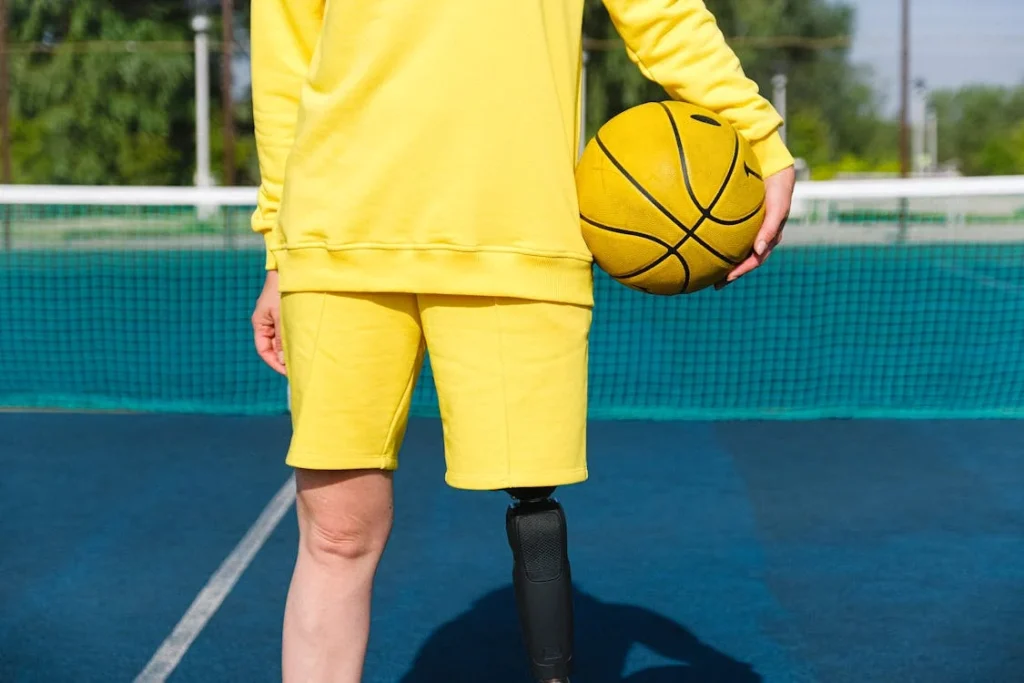
The Role of Pressure Mapping in Pediatric Prosthetics
Supporting Growth and Comfort in Young Users
Fitting prosthetics for children is a very different process compared to adults. Kids are constantly growing, their limbs change shape quickly, and their activity levels are often much higher.
This makes socket fit more challenging, and it also increases the risk of discomfort or injury if pressure isn’t managed carefully.
This is where pressure mapping becomes especially valuable. With children, verbal feedback is not always reliable. Young users might not know how to explain their discomfort, or they may ignore pain while playing or being active.
Pressure mapping gives clinicians a clearer picture without needing the child to fully explain what they’re feeling.
By reading pressure patterns inside the socket, prosthetists can detect uneven force distribution, poor support, or hotspots that could cause skin problems.
It provides a silent, objective form of communication between the body and the prosthetist. This is essential in making sure kids feel good in their prosthetics—and stay safe while using them.
As a child grows, their prosthetic must be refitted or replaced frequently. Pressure mapping makes it easier to handle these transitions. It helps ensure that each new socket matches the limb’s current size and shape, reducing the chances of pressure injuries during these growth spurts.
When children have a socket that fits well, they move more naturally, participate more freely in activities, and avoid the pain or fear that can come with a poor fit. That means more play, better mobility, and a healthier approach to using prosthetics as they grow.
Encouraging Long-Term Prosthetic Success from an Early Age
One of the long-term benefits of using pressure mapping in pediatric prosthetics is that it helps form positive habits early. When a child’s first experiences with a prosthetic are comfortable and pain-free, they’re more likely to stick with it.
They begin to trust the device as part of their body, rather than seeing it as something that holds them back.
On the other hand, a poor fit early on can lead to fear, frustration, and even rejection of the prosthetic altogether. That’s why early fittings are so critical—and why pressure mapping gives young users a better start.
It reduces the guesswork and helps ensure that their first steps, first climbs, and first jumps are supported by a prosthetic that truly fits.
It also teaches families to become more involved in the fitting process. Parents or guardians can see the pressure maps and understand where the limb might be under stress.
This encourages them to monitor for signs of discomfort and return for follow-up care before problems grow.
At Robobionics, we take pediatric care seriously. We believe children deserve the same level of precision, attention, and comfort as any adult—if not more.
Pressure mapping is one of the tools that helps us deliver on that promise, supporting young lives with technology that grows with them.
Conclusion
A perfect prosthetic fit isn’t about guesswork—it’s about understanding the body, respecting its needs, and using the right tools to support it. Pressure mapping turns invisible problems into visible solutions. It helps create sockets that are more than just wearable—they’re comfortable, safe, and built for real life.
Whether it’s a new user taking their first steps, a child growing into their next phase, or a seasoned wearer fine-tuning their fit, pressure mapping adds clarity at every stage. It protects the skin, improves comfort, reduces the need for repeated visits, and most importantly, builds confidence.
At Robobionics, we believe the future of prosthetics lies in this blend of smart technology and human care. Pressure mapping is just one part of the puzzle—but it’s a powerful one. And when it’s used with empathy and expertise, it transforms lives step by step



